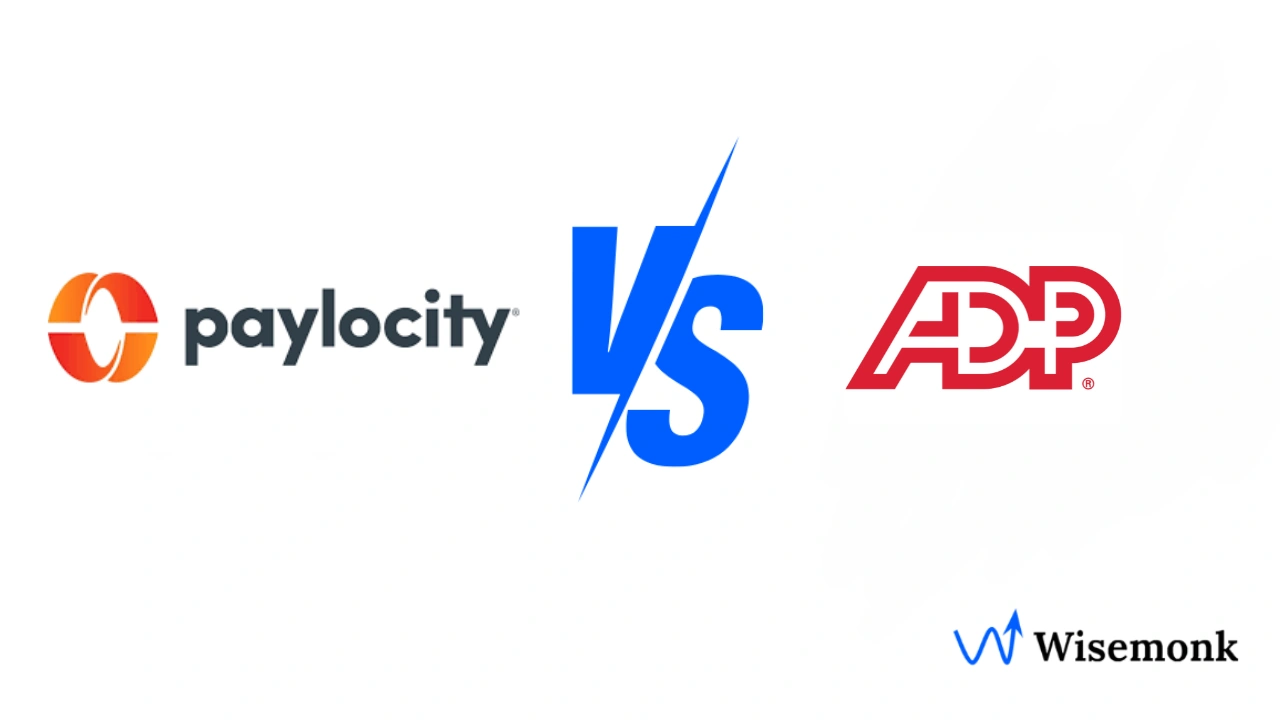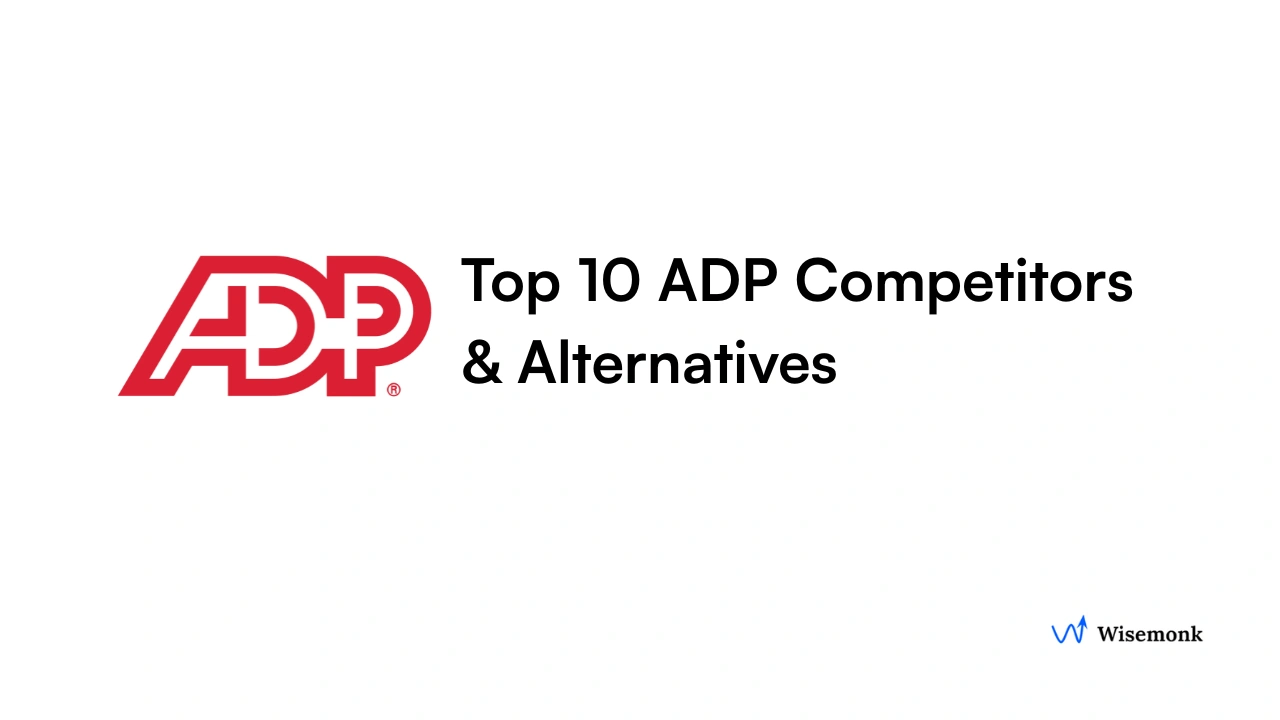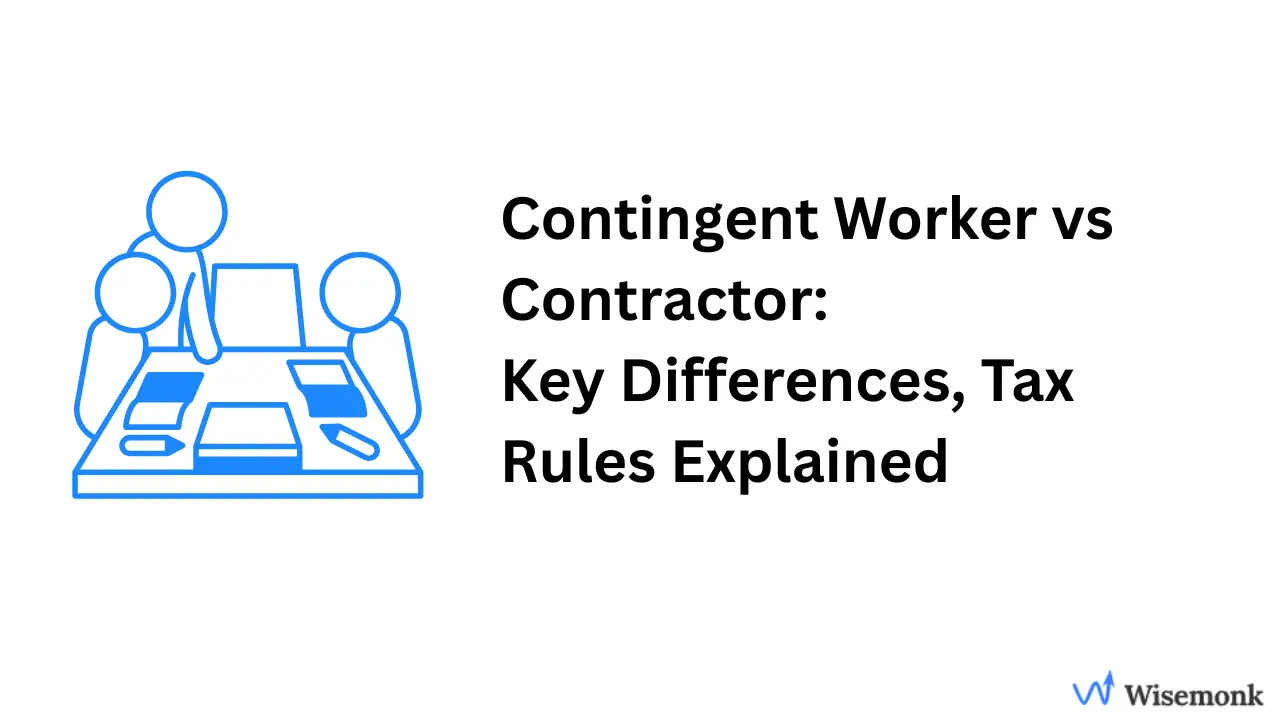- Paylocity is best for mid-sized businesses with strong employee engagement and an easy-to-use HR platform, but limited global payroll support.
- ADP is suited for small to large businesses, offering global payroll, compliance tools, and scalability, but at a premium price.
- Key Features Comparison: Paylocity focuses on payroll automation, employee self-service, and workforce management, while ADP excels in global payroll, multi-currency support, and enterprise-level HR solutions.
- Scalability and Integrations: ADP provides robust scalability and integrations for larger enterprises with international teams. Paylocity suits growing domestic businesses with simpler integration needs.
- Customer Support: ADP offers 24/7 support and dedicated account managers. Paylocity provides live chat and phone support, with service quality varying by plan.
Need help simplifying your payroll process? Contact us today!
Discover how Wisemonk creates impactful and reliable content.
Trying to decide between Paylocity vs ADP for your payroll and HR needs? Both are major players in the payroll software and HR management space, packed with features to help businesses run smoothly. But they’re not the same, each has its own strengths and weaknesses. That’s why it’s so important to dig into their key features, pricing, and support services to find the right fit for your team. Whether you’re a small business looking to scale or handling global payroll for a growing company, knowing which platform can best handle your payroll processing and employee benefits is essential.
In this guide, we’ll break down the key differences between Paylocity and ADP, helping you choose the platform that’s going to work best for your business.
What are the key differences between ADP and Paylocity?[toc=Key Differences]
When comparing ADP and Paylocity, it's essential to focus on their core features, pricing, and user experience. Here’s a clear comparison to help you decide which platform suits your business needs:
- Target Market:
- Paylocity: Ideal for mid-sized businesses seeking a user-friendly, all-in-one Human Resources solution.
- ADP: Best for small to large enterprises that need scalable solutions, including global payroll capabilities and advanced HR tools.
- User Interface:
- Paylocity: Intuitive design with a focus on employee engagement and easy navigation.
- ADP: Offers a more complex interface but provides extensive customization options for businesses with complex payroll needs.
- Payroll Processing:
- Paylocity: Offers automated payroll processing and self-service options for employees.
- ADP: Provides robust payroll processing with extensive compliance tools to manage and process payroll across various jurisdictions.
- Global Payroll:
- Paylocity: Limited global payroll capabilities, primarily suited for U.S.-based operations.
- ADP: Extensive global payroll support, including multi-country and multi-currency capabilities.
- Employee Self-Service:
- Paylocity: High adoption rates, with an easy-to-use mobile app that enables employees to access pay stubs and time off requests.
- ADP: Available but may require additional setup and training to fully implement.
- Customer Support:
- Paylocity: Weekday support with quick response times and 85% of issues resolved on the first contact.
- ADP: 24/7 customer support, making it ideal for businesses with global payroll needs, though response times may vary.
- Pricing Structure:
- Paylocity: Transparent pricing, starting at $9 per employee per month, making it affordable for mid-sized businesses.
- ADP: Pricing varies, typically higher, starting at $15 per employee per month, reflecting its premium features like global payroll and compliance requirement tools.
- Integration Capabilities:
- Paylocity: Integrates with over 350 third-party tools for enhanced HR management and workforce management.
- ADP: Offers over 500 integrations and is highly compatible with enterprise systems.
- Scalability:
- Paylocity: Great for mid-sized businesses looking for an easy-to-scale solution.
- ADP: Best for large enterprises with complex HR needs that require high scalability and global payroll.
If you're a mid-sized business seeking a user-friendly and affordable HR solution, Paylocity is a strong choice. If your business requires global payroll and scalable HR tools, ADP provides a more comprehensive platform suited for larger organizations.
What are the key features Paylocity and ADP offer?[toc=Key Features]
Both Paylocity and ADP offer comprehensive payroll and HR solutions, but they serve different business needs:
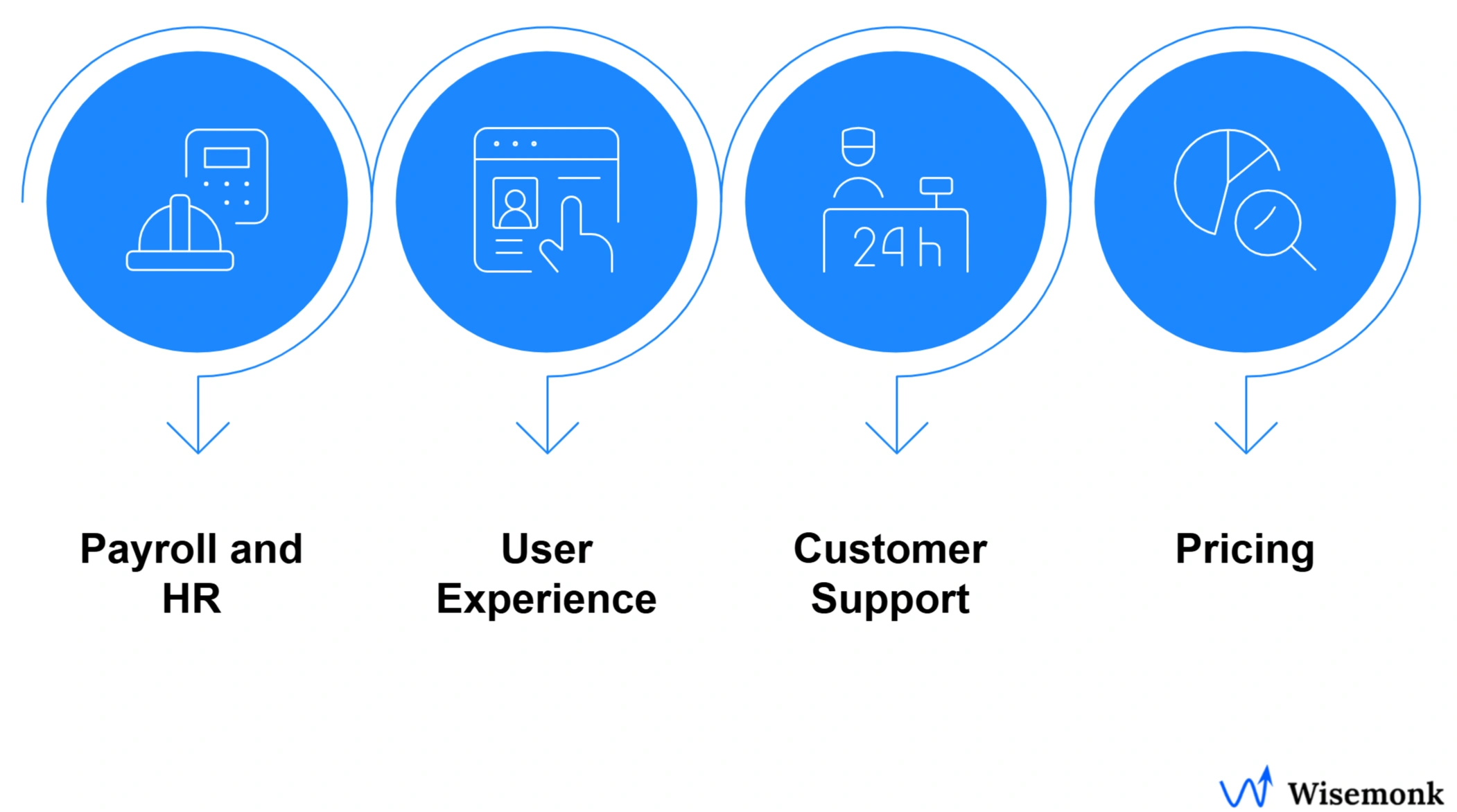
Payroll and HR Management Functions:
- Paylocity: Offers automated payroll processing, benefits administration, tax filing, and employee self-service, making it ideal for mid-sized organizations. It integrates with over 350 third-party applications for enhanced HR management.
- ADP: Known for its global payroll capabilities, multi-country and multi-currency payroll support, and an all-in-one platform with compliance reporting, employee benefits management, and performance management features. Ideal for large businesses needing robust HR tools.
User Experience:
- Paylocity: Features an intuitive, user-friendly interface that enhances employee engagement with easy access to payroll data and HR tasks.
- ADP: Offers a more complex interface, but highly customizable, which is beneficial for companies needing advanced payroll processing and workforce management.
Customer Support:
- Paylocity: Offers weekday support with fast response times and resolves 85% of issues on the first contact.
- ADP: Provides 24/7 customer support, ideal for businesses with global payroll needs and requiring compliance tools to manage payroll across multiple countries.
Pricing:
- Paylocity: Starting at $9 per employee per month, it’s a cost-effective solution for mid-sized businesses focused on employee engagement and HR management.
- ADP: Starts at $15 per employee per month, with a higher cost reflecting its premium features like global payroll, advanced compliance, and training tools.
Paylocity is perfect for mid-sized businesses seeking affordable payroll and HR tools with strong employee engagement. ADP is best for larger businesses needing comprehensive global payroll and HR compliance tools.
Which platform offers better scalability and integrations?[toc=Scalability & Integrations]
When you're looking to scale your business and integrate seamlessly with existing tools, the right payroll platform can make all the difference. Here's how Paylocity and ADP compare in terms of scalability and integration capabilities.
Paylocity:
- Integration Marketplace: Paylocity offers hundreds of integrations across HR, payroll, benefits, and accounting software. This makes it a great fit for businesses looking to streamline HR workflows and improve employee engagement.
- APIs: Paylocity provides developer-friendly APIs for easy integration with ERP systems, ATS, and identity platforms, helping businesses create a customized HR solution.
- Single Sign-On (SSO): Paylocity supports SSO and directory sync with platforms like Microsoft Entra, Google Workspace, and Okta, simplifying access and improving employee self-service.
ADP:
- Integration Marketplace: ADP integrates seamlessly with major ERPs like Sage, QuickBooks, Xero, Workday, and HealthEquity, making it ideal for companies with complex payroll processing and global HR needs.
- APIs: ADP offers a centralized platform for building custom integrations with its HR tools and global payroll solutions, providing flexibility for businesses of all sizes.
- Single Sign-On (SSO): While ADP doesn’t directly mention SSO, it offers integration with SSO through APIs, ensuring secure and easy access for employees and admins alike.
Paylocity offers easy integration for mid-sized businesses with a focus on employee engagement and HR management. ADP is the better choice for larger organizations or those with global payroll needs, offering extensive integration options and customized payroll solutions.
What do Paylocity users say?[toc=Paylocity User Reviews]
Paylocity Positive reviews:
"I love the fact that I can process all my payroll (W-2 & 1099s) in one location. We also utilize Paylocity's Time Management software that feeds nicely into scheduling and payroll processing. We recently began adding more modules like Employee Voice and Learning Management System. I am excited that my employees can find all this information through one simple log in, either mobile or online."
- Alicia V., Chief Executive Officer, Mid-Market, rated 4.5/5 stars on G2
"We have been with Paylocity for over six years and have seen the platform evolve and expand significantly during that time. One of the biggest strengths of Paylocity is how comprehensive it has become, offering a wide range of modules that integrate seamlessly, which has streamlined many aspects of our operations. We currently utilize HR and Payroll, Performance, Time and Labor, Learning, and Onboarding, and each has brought real value to our organization. Payroll and Time and Labor are intuitive and reliable, saving our team time and reducing errors. The HR and Performance modules have made tracking employee information and managing reviews much more efficient. The Learning and Onboarding tools have also been extremely beneficial, especially in creating a smooth process for new hires and providing ongoing training opportunities for our staff."
- Emily C., VP of HR, Mid-Market, rated 4.5/5 stars on G2
Paylocity Negative reviews:
"As an administrator, it's hard for me to see what employees see. I wish there was a way to switch from administrator to "employee view" so I can better assist employees when they need help navigating."
- Alicia V., Chief Executive Officer, Mid-Market, rated 4.5/5 stars on G2
"A couple of downsides we’ve experienced are that more complex technical issues and tax-related support requests can take longer to resolve, and at times, the guidance you receive can vary depending on the representative you speak with. While these situations can be frustrating, overall support has still been helpful and responsive."
- Emily C., VP of HR, Mid-Market, rated 4.5/5 stars on G2
What do ADP users say?[toc=ADP User Reviews]
ADP Positive reviews:
"What I like best about ADP Payroll Services is their user-friendly and intuitive software, combined with an exceptionally proactive and professional sales team"
-Sam G., General Manager, Small-Business, rated 3.5/5 stars on G2
"It has mobile application that you can download/review your pay slip"
- Verified User in Financial Services, Enterprise, rated 4/5 stars on G2
ADP Negative reviews:
"What I dislike most about ADP Payroll Services is their extremely poor technical support. The team tends to avoid actively resolving issues, often responding with irrelevant questions and showing a significant lack of urgency and accountability"
-Sam G., General Manager, Small-Business, rated 3.5/5 stars on G2
"It cannot provide detailed information from your pay slips like how much you get travel allowance in a year"
- Verified User in Financial Services, Enterprise, rated 4/5 stars on G2
What are the Pros and Cons of ADP and Paylocity?[toc=Pros & Cons]
When evaluating Paylocity vs ADP, it’s important to compare the strengths and weaknesses of each platform. Below, we break down their pros and cons to help you make an informed decision.
Paylocity is a solid choice for mid-sized businesses needing an affordable, intuitive HR platform. ADP, however, is best for large enterprises seeking global payroll, compliance management, and a more scalable HR solution.
How to choose the right payroll platform for your business?[toc=How to Choose]
From our extensive experience in helping companies navigate payroll complexities, we understand that choosing the right payroll platform can feel overwhelming. However, focusing on a few key aspects will help ensure you pick the best solution for your needs.
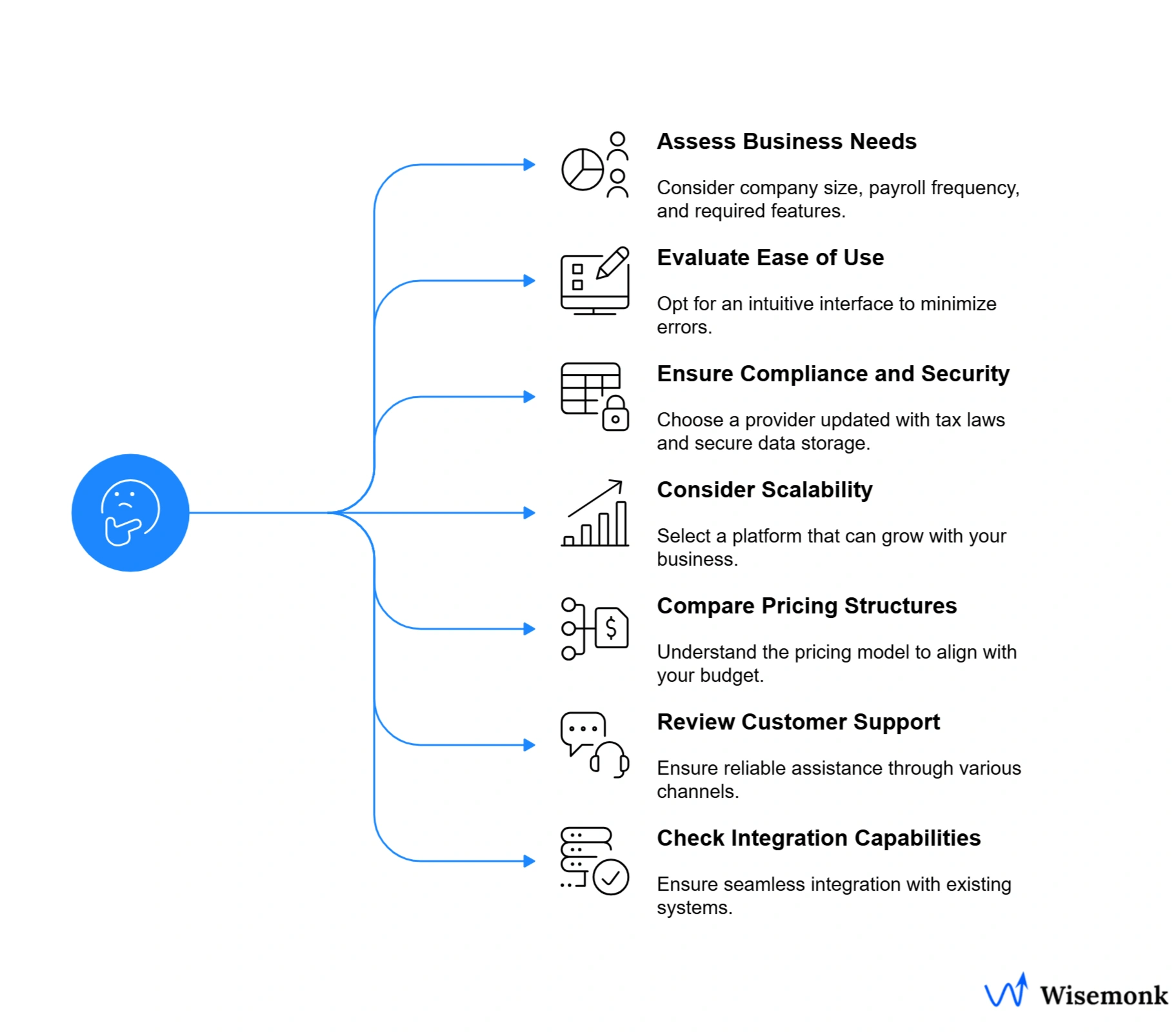
1. Assess Your Business Needs
Consider factors like company size, payroll frequency, and complexity. Determine if you require features such as benefits administration, tax filing, or global payroll capabilities.
2. Evaluate Ease of Use
Opt for a platform with an intuitive interface and user-friendly features. This reduces the learning curve and minimizes errors.
3. Ensure Compliance and Security
Choose a provider that stays updated with tax laws and regulations. Ensure they offer secure data storage and encryption to protect sensitive information.
4. Consider Scalability
Select a platform that can grow with your business. It should accommodate an increasing number of employees and expanding payroll needs.
5. Compare Pricing Structures
Understand the pricing model, whether it's per employee, per payroll run, or a flat fee. Ensure it aligns with your budget and expected usage.
6. Review Customer Support
Reliable customer support is essential. Check if the provider offers timely assistance through various channels like phone, email, or live chat.
7. Check Integration Capabilities
Ensure the platform integrates seamlessly with your existing systems, such as accounting software or HR tools, to streamline operations.
Selecting the right payroll platform involves aligning the software's features with your business's specific needs and growth plans. Prioritize ease of use, compliance, scalability, and support to ensure smooth payroll operations.
How Wisemonk can help?[toc=How Wisemonk Helps]
Wisemonk is a leading Employer of Record service provider that helps in simplifying payroll, HR, and compliance processes for companies hiring talent globally, especially in India. Our experience and comprehensive solutions allow businesses to seamlessly manage payroll and HR tasks without the hassle of navigating complex regulations and systems.
Here’s how we can assist you:
- Simplified Payroll and HR Management: We help businesses streamline payroll processing, tax filing, and employee benefits management, ensuring compliance with local and international laws. Whether you’re managing a small team or a global workforce, we make payroll efficient and error-free.
- Global Talent Acquisition and Compliance: Looking to expand your team in India or other regions? Wisemonk helps you navigate global payroll complexities, ensuring your business stays compliant with local labor laws and tax regulations. We also manage employee data, ensuring everything is in order across borders.
- Cost-Effective Solutions: By using our Employer of Record (EOR) services, you save on infrastructure costs while expanding your team without setting up legal entities in every country you hire. We ensure that your business gets the best ROI on HR tools and services.
- End-to-End Employee Experience: From onboarding to employee self-service portals, we manage everything so your employees have a seamless experience. We also provide HR support, from day one to ensure your remote teams are set up for success, especially in India’s growing talent market.
- Transparent Pricing with No Hidden Fees: You get transparent pricing models without unexpected fees. Our flexible pricing ensures you get a solution that fits your business, whether you’re hiring a few employees or managing a large team.
Whether you need help managing global payroll, staying compliant with local regulations, or simplifying your HR workflows, Wisemonk is your trusted partner in navigating the complexities of international hiring. Let us handle the details while you focus on growing your business. Contact us today!
